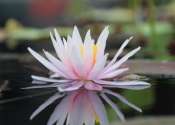Ancient Maya reservoirs offer lessons for today's water crises
According to a new paper, ancient Maya reservoirs, which used aquatic plants to filter and clean the water, "can serve as archetypes for natural, sustainable water systems to address future water needs."









